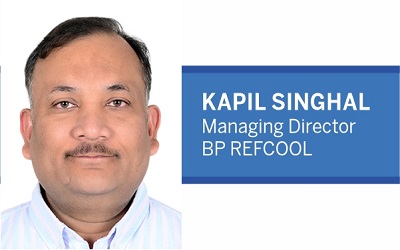New emerging secondary refrigerants are solving never-before-seen cooling challenges like energy efficiency, installed cost, and sustainable solutions.
Refrigeration systems fundamentally work by transforming electrical energy into the capacity to remove heat. This process is usually driven by primary refrigerants through a cycle that involves compression, condensation, expansion, and evaporation. On the other hand, secondary refrigerants are used to transfer heat without undergoing a phase change, with volatile secondary refrigerants being a rare exception that we’ll set aside for now. Typically, discussions on refrigeration center around the primary refrigeration cycle and refrigerants. However, this article shifts the focus to the often-overlooked secondary refrigerants.

Why Consider a Secondary Refrigerant?
While secondary refrigerants come with increased costs due to the need for additional pumps, piping, and storage tanks, they offer significant advantages that can justify the expense. Utilizing a secondary cooling loop, such as chilled water, glycol, or brine, can reduce the risk of leaks, lower the refrigerant charge, and potentially enhance safety by decreasing the exposure to hazardous materials. This can lead to improved employee safety, reduced food safety risks, and significant cost savings in the long run. Additionally, reducing the refrigerant charge can help facilities lower their Process Safety Management (PSM) obligations, making secondary refrigerants an attractive option for many operations.
Selecting the Right Secondary Refrigerant
Choosing the appropriate secondary refrigerant can be complex due to the range of available options. According to B.P. Refcool, there isn’t a single best choice for every application. It’s essential to consider your facility’s temperature and safety requirements when making a decision. Here’s a brief overview of some common secondary refrigerants, though a few sentences may not fully capture their nuances:
Chilled water is an economical and straightforward option, but it can face issues with freezing, bacterial growth, and scale build-up. New-age additive packages address all issues, including corrosion with water.
Brine Water: Relatively affordable and effective at lower temperatures than water, yet its corrosive nature can lead to equipment wear. There has been recent development with additive packages. Some brines provide excellent performance parameters.
Propylene glycol offers improved freezing points and growth inhibition compared to water and brine, though it comes with higher costs, reduced heat transfer efficiency, and eventual freezing issues.
Ethylene Glycol: Similar to Propylene Glycol but with better heat transfer due to its lower viscosity. However, its high toxicity limits its use in many food production environments.
For tailored advice on designing and implementing your refrigeration system, B.P. Refcool is ready to assist with your next project.


